Feeding birds in winter – with tips from Monty Don
This practical advice on feeding birds in winter is for you if you want to give visiting wildlife a helping hand
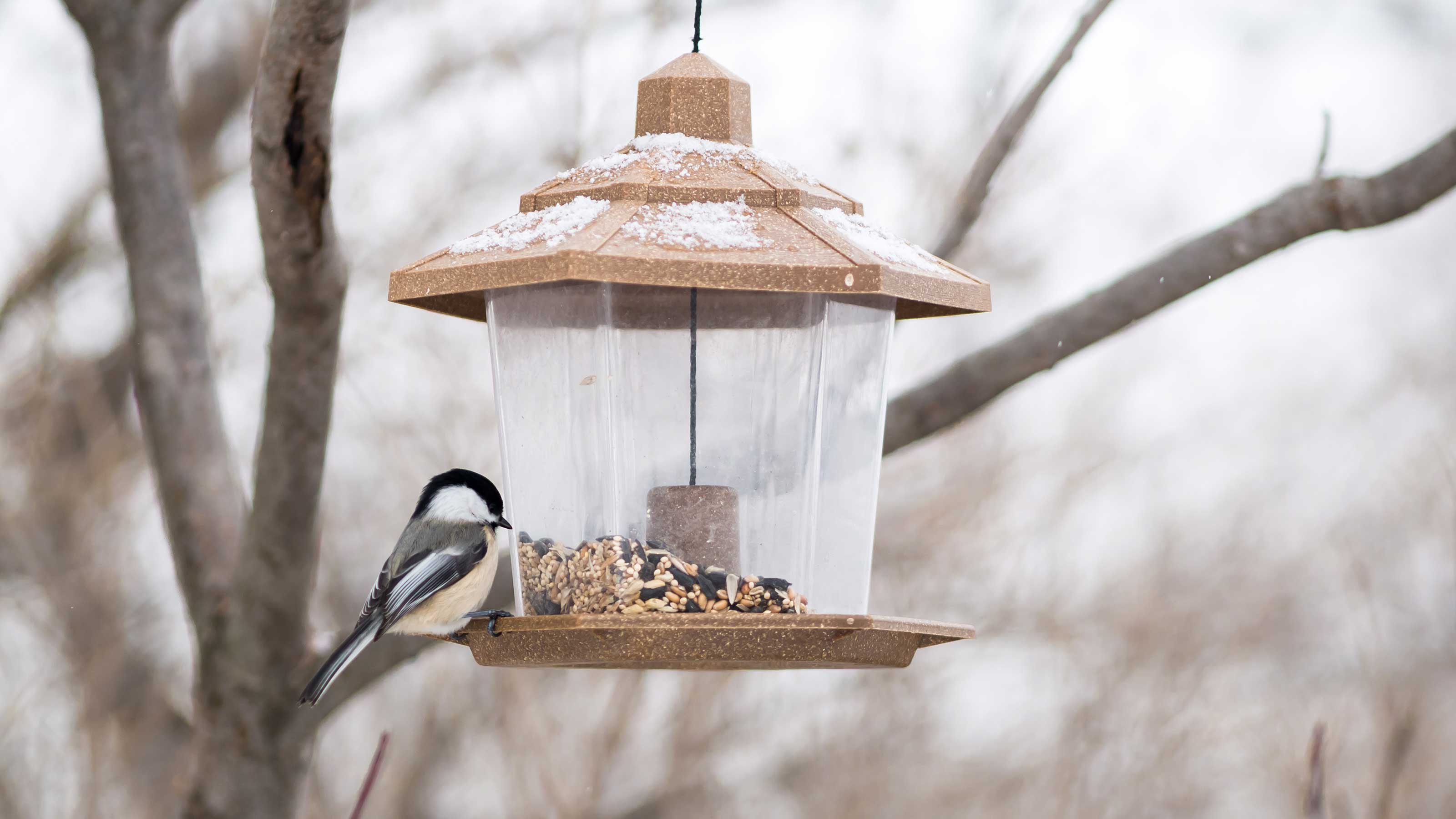
Feeding birds in winter is one of the key things you can do to help these feathered friends. Birds that migrate need energy for the journey they're about to make, and those that remain will benefit from a reliable source of food. And when the really cold weather arrives, birds need high-energy sustenance to survive the conditions.
As well as giving them a helping hand, feeding garden birds also brings the pleasure of seeing different species up close. It can even attract those we haven't seen before. And it's a lovely way to brighten up the winter garden with life and color when there's often a little less to look at.
To bring a wide variety of birds to the garden and keep them healthy it's important to feed them the right food, in the right way. One of our favorite gardeners, Monty Don, shared his advice for feeding birds in winter on Gardeners' World – we've rounded up his top tips below, plus some of our own.
When should you start feeding birds in winter?
You can start feeding birds once autumn begins, as Monty does.
Continue to put food out regularly throughout the colder months. If the weather is particularly severe, you may even want to put out food twice a day: once in the morning and again in the early afternoon, as the RSPB suggests.
However, feeding the birds isn't just for your list of autumn and winter jobs in the garden. There's nothing stopping you from feeding birds all year round. It can be a great project for those of us with gardens smaller than Monty's that don't offer such varied and plentiful sources of nourishment.
After all, birds need food in spring and summer, too, and food shortages can occur. What you feed them then will be different, though, as birds' requirements at other times of the year aren't the same as those in autumn and winter.
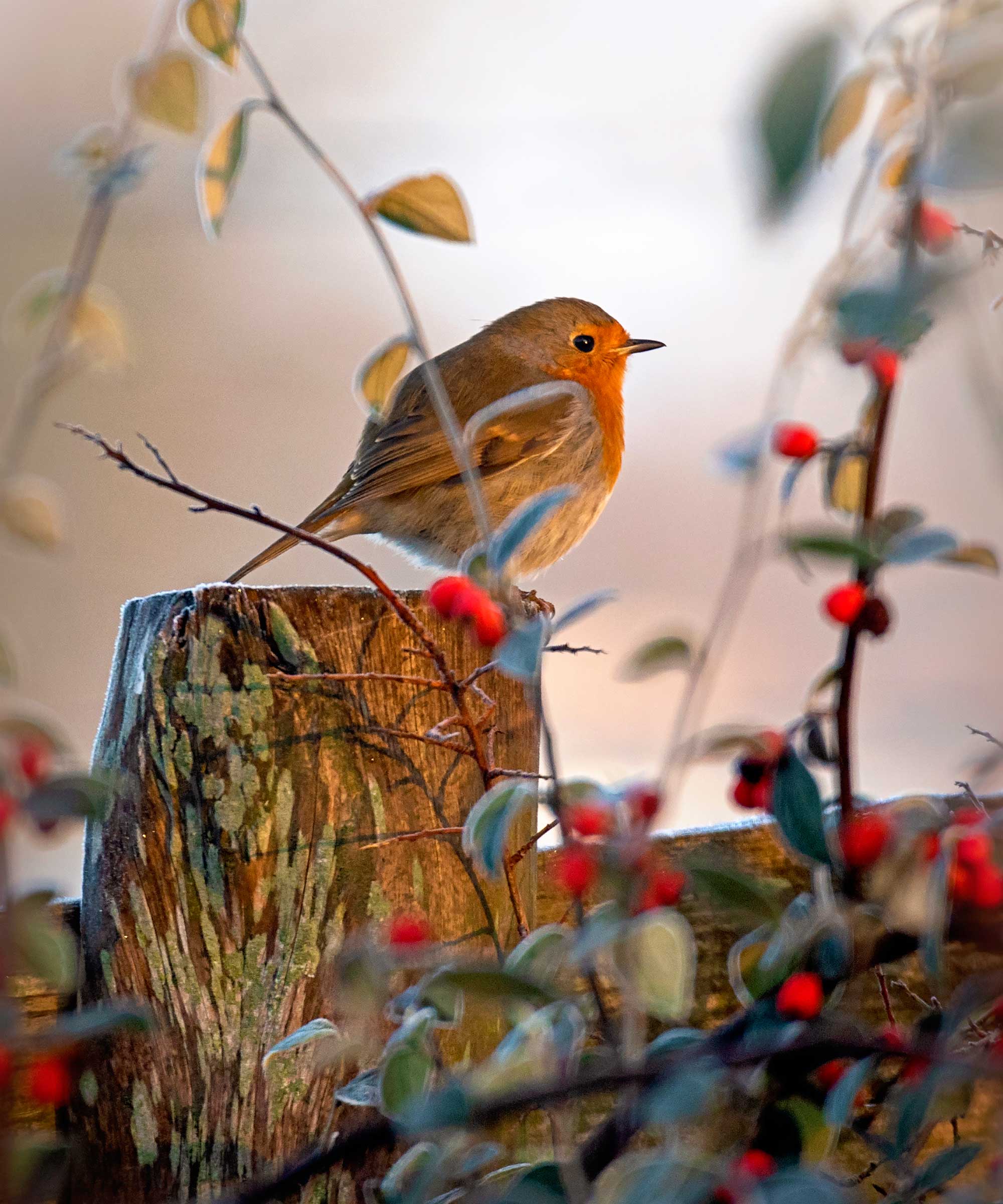
A visiting robin will always lift the spirits
What should you feed birds in winter? 5 top choices
There are a number of different things that you can offer when feeding birds in winter, as Monty explains. If you're on the lookout for easy wildlife garden ideas, these tips are sure to come in useful.
1. Sunflower seeds
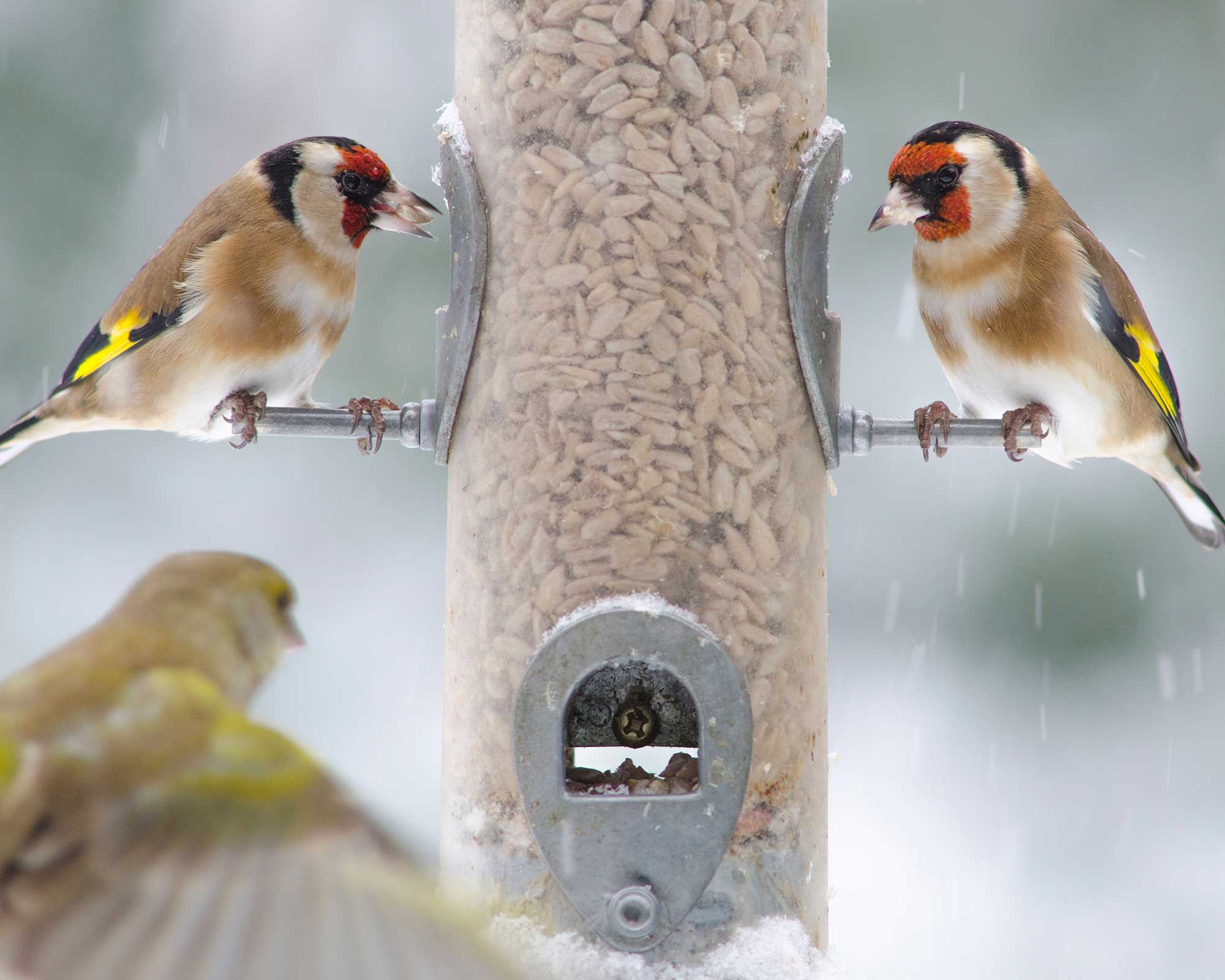
Sunflower seeds are loved by many birds, including goldfinches
Monty says the single best food is sunflower seeds when it comes to feeding birds in winter. These are available in two forms.
Sunflower seeds with the husks removed are preferred by some birds, including blackbirds, Monty explains. There will also be less mess to clear up. Unhulled sunflower seeds can be provided for birds that have beaks adapted for taking the husks off, he adds.
If you've learned how to grow sunflowers this year, Monty advises leaving the flower heads for the birds to take the seed from, rather than cutting them back.
2. Niger seeds
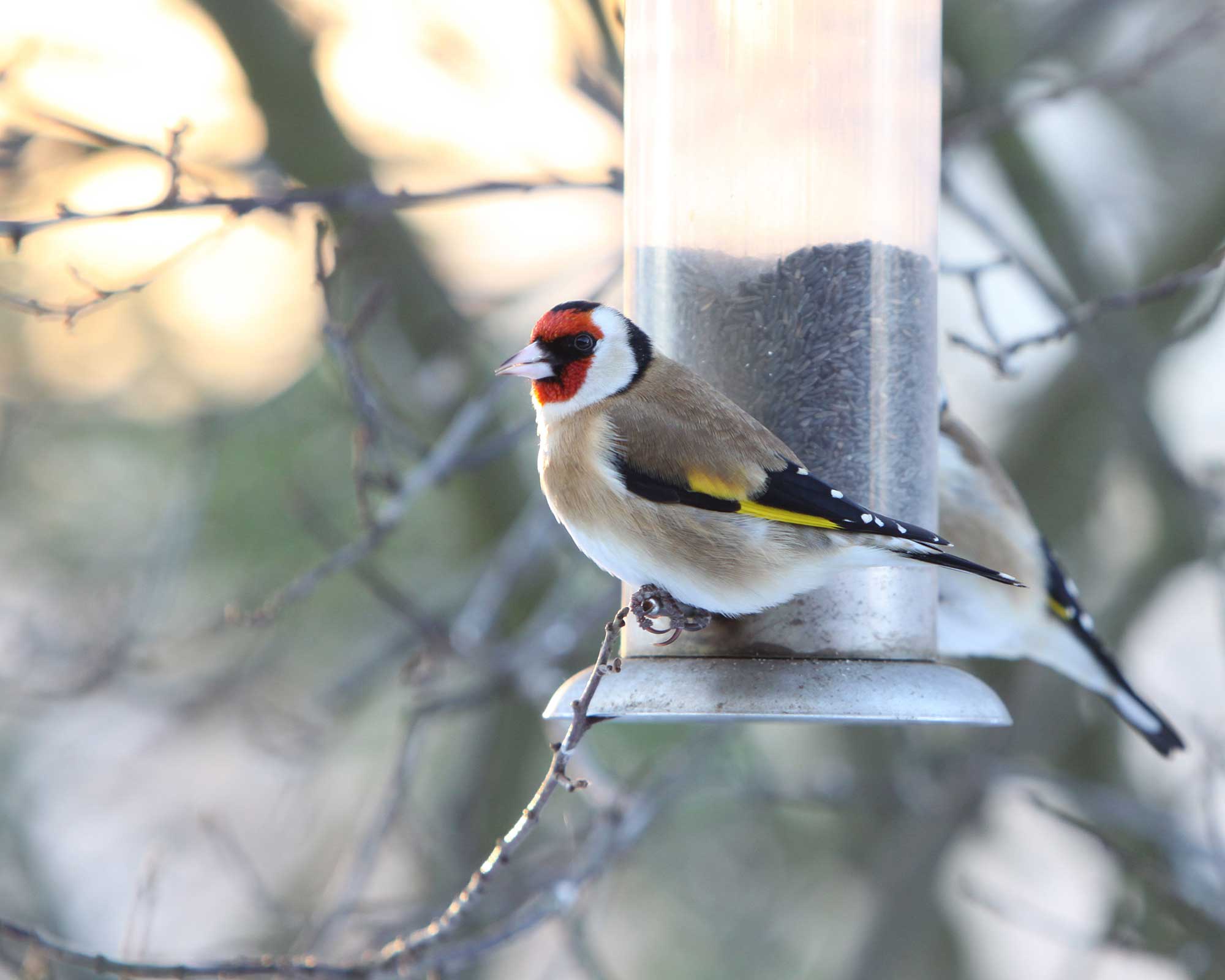
Niger seeds are tiny, so need a specially designed bird feeder
Monty also feeds birds niger (or nyjer) seeds. These are loved by finches, he says, and house sparrows, siskins, and tits enjoy them too. The gardening guru sprinkles them on a log, which allows little birds that can get their beaks into the crevices to enjoy the seeds.
As an alternative, when choosing the best bird feeder for your garden, pick one that is made specifically to hold the tiny niger seeds. A design with a tray at the bottom will save the fallen seed so small birds can eat it.
3. Peanuts

Peanuts are a good source of energy for birds
Peanuts are also a favorite bird food that Monty offers over winter, bringing tits and even the great spotted woodpecker to his garden. The Wildlife Trusts suggests using mesh peanut feeders – these allow birds to take only small pieces of peanut rather than whole nuts, preventing the risk of them choking.
Don't position the feeders in the open, Monty warns. They should be located in the shade of a tree or shrub. If you have a garden wall, it's an ideal hanging spot, Monty says. The birds like it, and the food stays clear of rats and squirrels (you can learn more about how to get rid of squirrels with our dedicated guide).
Make sure any peanuts you use are high-quality bird food. Salted and dry roasted peanuts should never be fed to birds.
4. Mealworms
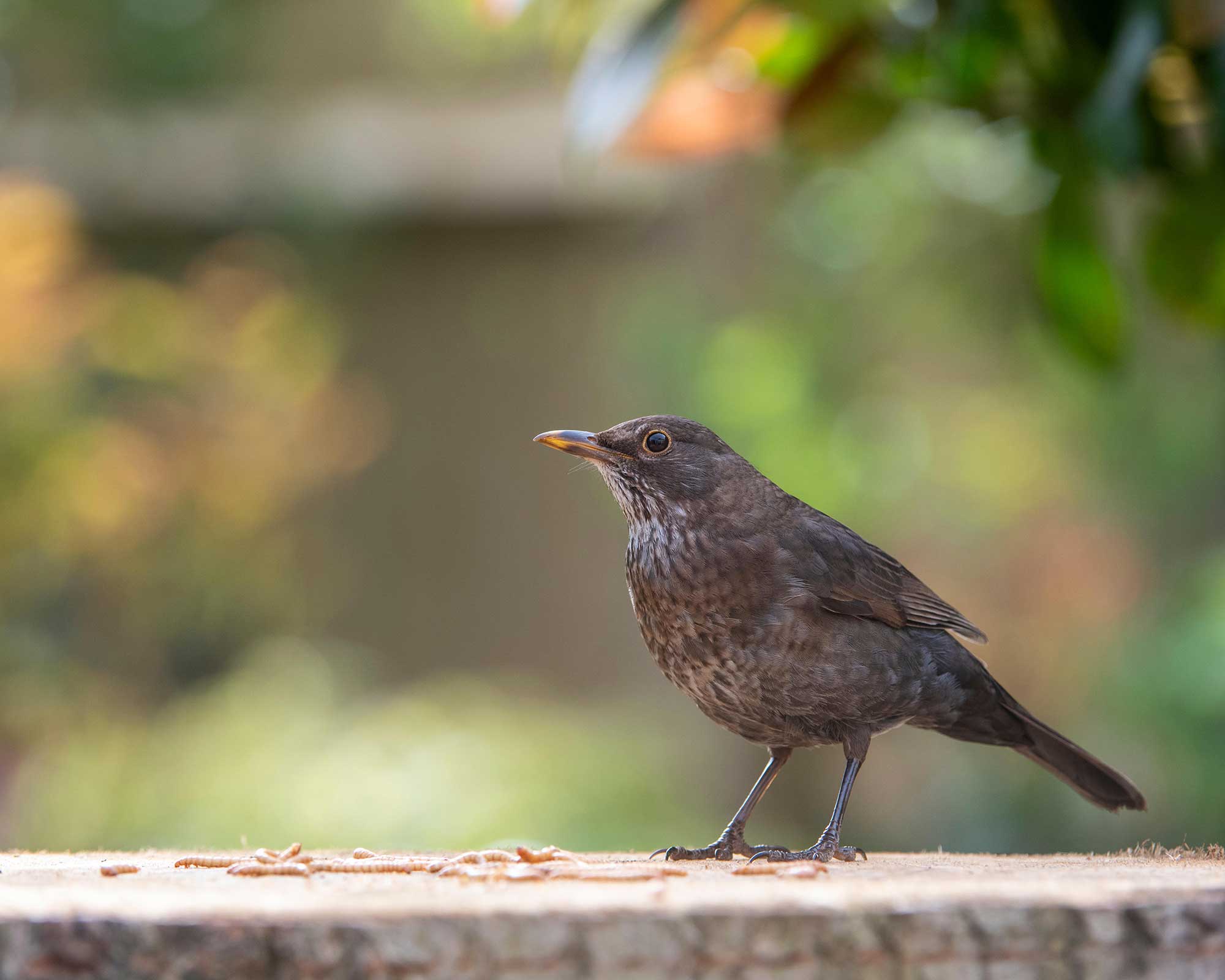
An offering of mealworms has attracted this female blackbird
Monty also recommends buying dried mealworms to feed to birds. He says they're a favorite of robins and blackbirds, and also starlings.
5. Suet balls
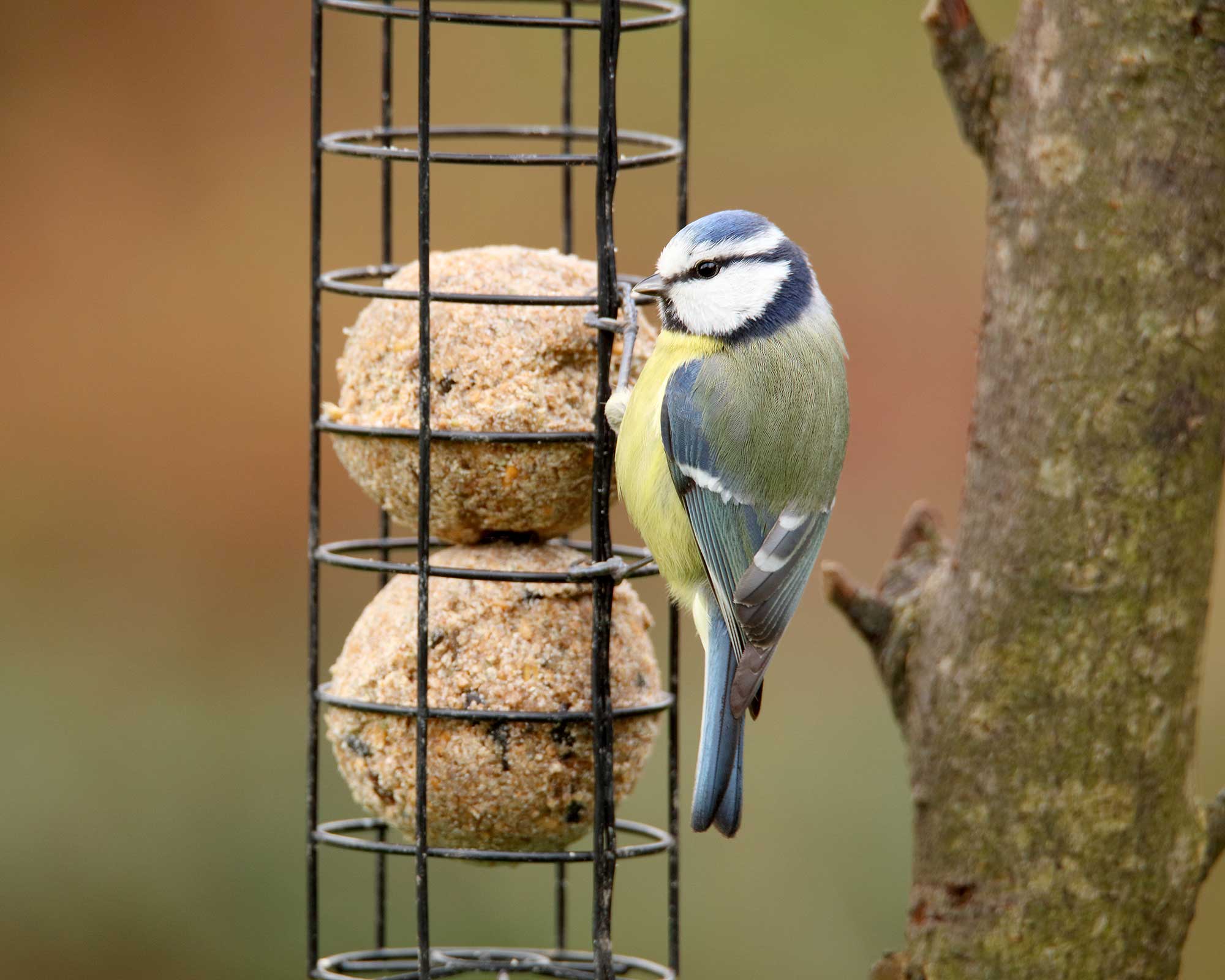
Suet balls are an ideal food source for birds in winter
Many birds like suet and it provides a good source of energy for them, particularly throughout winter, as says The Wildlife Trusts.
You can provide this as fat slabs or fat balls, Monty advises. There are specially designed cages for them.
The containers for fat balls or slabs can be positioned on a table or hung up, Monty says. He chooses to hang them on a garden wall.
How do you feed birds in winter?
Monty makes use of a table that has plants on it at other times of the year as a bird feeding surface when autumn arrives. But that's only one of the places he provides for his winged diners. It's important to create different feeding locations in the garden to suit different birds, Monty says.
You can also learn how to make bird feeders for a fun activity that all the family can get involved in.
However you decide to feed your feathered friends, good hygiene is essential. The RSPCA recommends a weekly clean of feeders, and that water containers should be cleaned daily and dried before refilling. If you have a bird table, the RSPB's advice is to brush off debris when you put out fresh food, and to clean it with a mild disinfectant solution every few weeks.
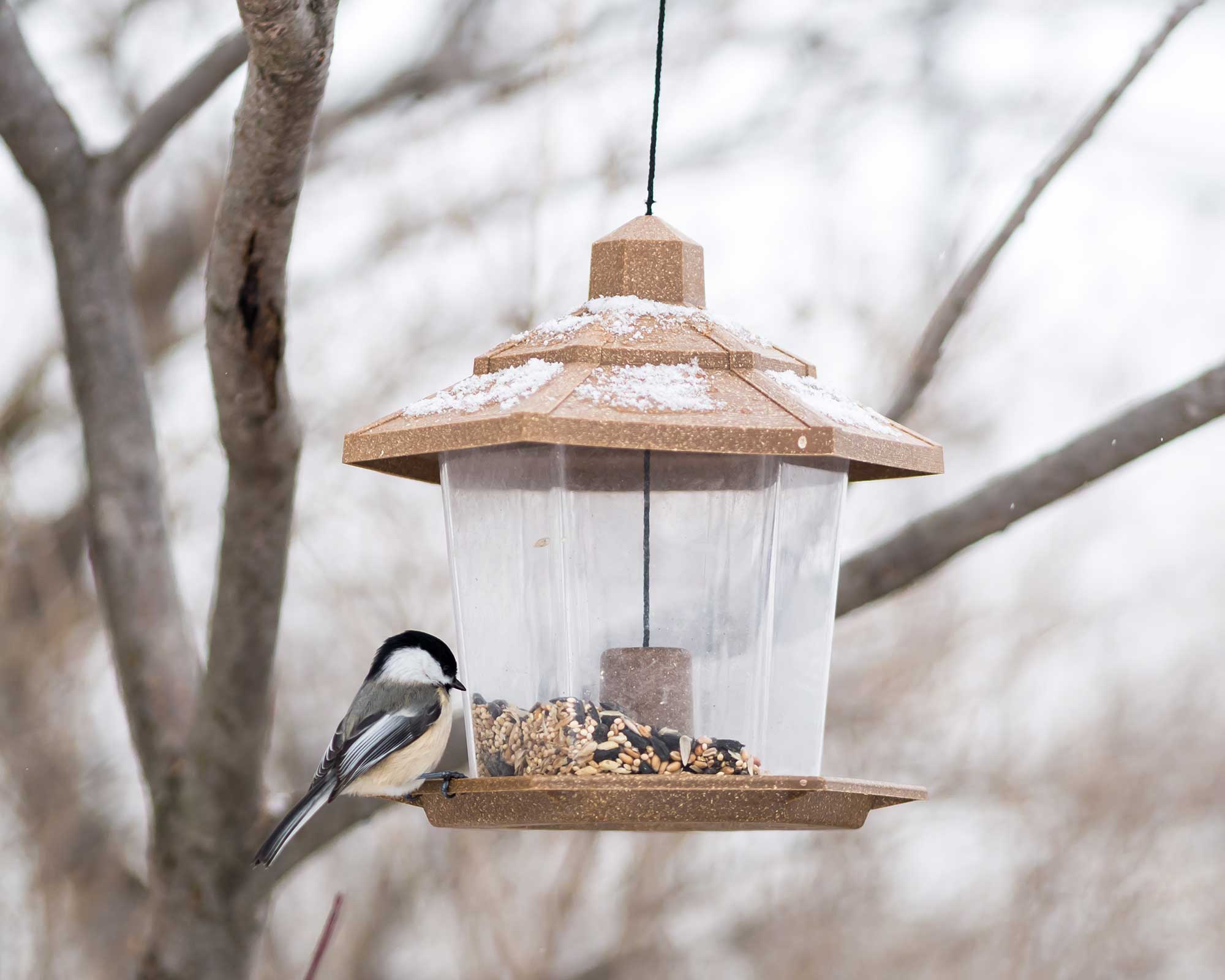
There are plenty of stylish bird feeders available
What else can you do to help birds this winter?
What else is vital for birds over autumn and winter? A source of fresh water, Monty says, for both drinking and washing. Make sure you break up the ice when freezing weather comes, or pour on a little hot water to melt it.
Don't forget about plant food sources, too. There are many plants with winter berries that will attract birds, plus others that will provide hips, seeds, fruit, and nuts. Some will also attract insects that the birds can feed on, too. The Wildlife Trusts suggests holly, hawthorn, ivy, rowan, honeysuckle, and dogwood.

The garden was always a big part of Holly's life growing up, as was the surrounding New Forest where she lived. Her appreciation for the great outdoors has only grown since then. She's been an allotment keeper, a professional gardener, and a botanical illustrator – plants are her passion.

